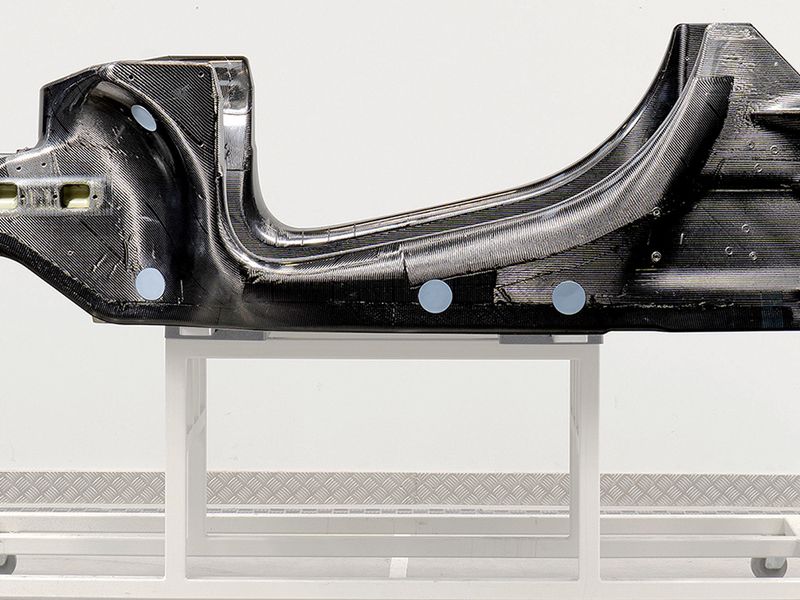
The COVID-19 pandemic has delayed the pivotal vehicle in McLaren Automotive’s transition to a 100 percent electrified portfolio, but the British exotic automaker’s future product plans are now coming into clearer focus.
Last week, McLaren released details of its newest vehicle architecture, which, in a different direction for the brand, has been specifically developed to accommodate hybrid powertrains. It’s still a central monocoque carbon-fiber tub, the key component that the automaker builds its supercars around. But McLaren’s previous two hybrids, the P1 and the Speedtail, have not been on dedicated hybrid platforms.
The upcoming vehicle, code-named P16, will feature a plug-in hybrid powertrain and have an electric range of roughly 19 miles, with a charge time of three to four hours, McLaren CEO Mike Flewitt told Automotive News last week. The electric motor sits between the engine and the gearbox, Flewitt said, but he declined to say which internal combustion engine will be included in the layout.
The hybrid will have a higher power output than McLaren’s entry Sports Series vehicles, but it will slot below the 720S from the brand’s midrange Super Series, he said.
“We would have started talking about the car at Goodwood, followed by a Pebble Beach launch, in terms of showing the car, and started selling in October,” Flewitt said. “But literally, everywhere closed down. We’ve got a development center just outside Barcelona in Spain, and we use some U.K. facilities, and they were all closed, so we couldn’t do any developments at all.”
McLaren’s factory paused production in late March and didn’t start again until June, with limited output of the Speedtail. The rest of the factory restarted in July, Flewitt said.
The new vehicle is now set to debut by year end, and North American deliveries will begin around May — more than six months after its original on-sale date.
Flewitt, who has driven the vehicle and called it “fabulous,” said a hybrid setup is the right link between internal combustion engines and electric vehicles.
“It brings significantly better emissions. You’ve still got all the driving dynamics of a supercar with the internal combustion engine,” he said. “You’ve got EV capability for those who want it. It’s a really great package in terms of getting what you need in terms of EV and emissions, but also giving you a proper supercar.”
As new models follow, a majority of McLaren’s launches will be hybrids, Flewitt said.
“Progressively, as we do new models, they’ll come off that new structure,” he said. “They’ll be hybridized.”
By 2025, McLaren’s whole lineup will be hybridized, Flewitt said. The brand’s first all-electric vehicle is further out, likely closer to 2030, Flewitt estimated. Even further out is McLaren’s probable shift to all EVs.
“As we look at what politicians around the world are saying, it looks like the first markets are talking about banning internal combustion engines from 2035,” Flewitt said. “So we’re making that a planning date that we will have the capability to be fully EV at that date.”
Flewitt said that as McLaren gets closer to 2035 and better understands what the market wants and governments require, it will be able to tune launches as it sees fit.
“I think the reality is, we’re going to migrate now from internal combustion to hybrid,” Flewitt said. “We’ll get to a point, probably towards the end of the decade, towards 2030, where we’ll start a migration from hybrid to EV. How long that takes is hard to say, but my guess is 2020 to 2030 will be about moving between internal combustion and hybrid, and 2030 to 2040 will be moving from hybrid to EV.”